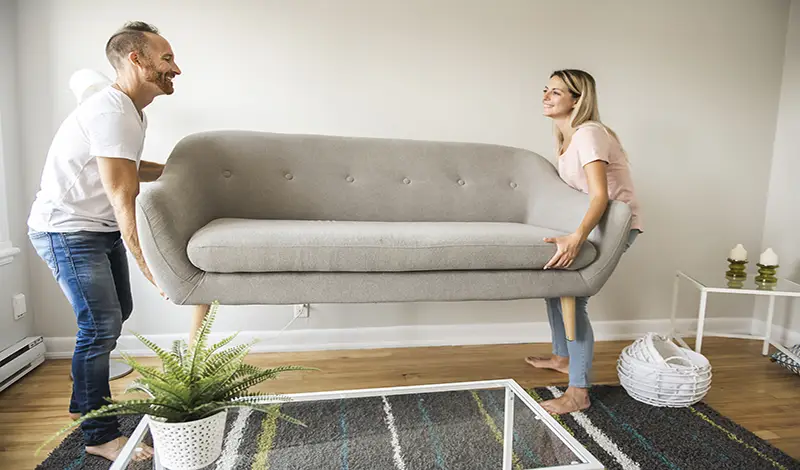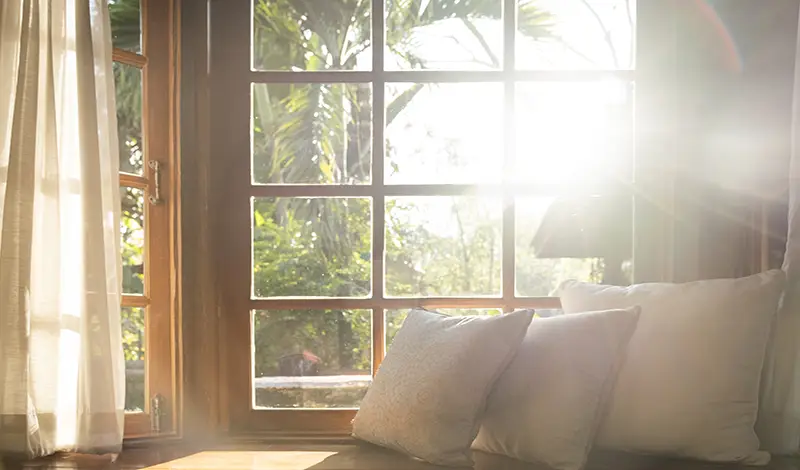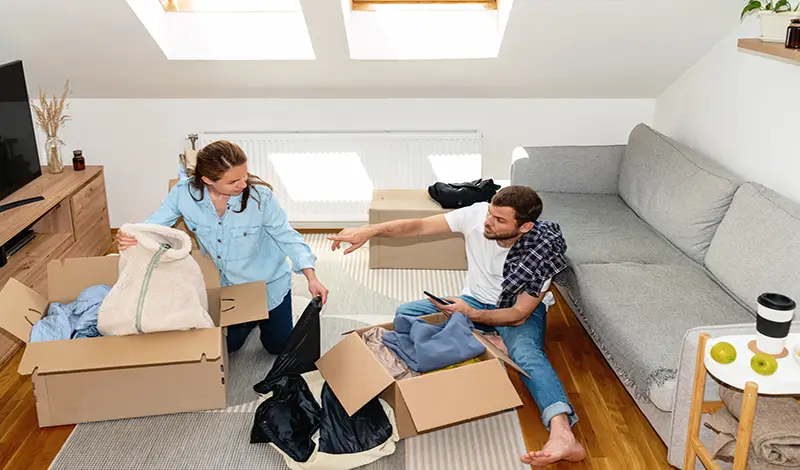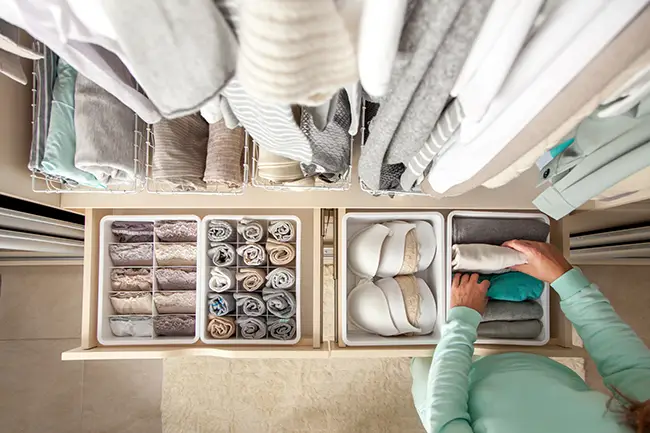How to Make a Room Look and Feel Bigger
Published on July 30, 2024 | 7 Minute read

Melanie
Ortiz Reyes
Content Specialist
Living in a small space comes with its own set of challenges, especially when it comes to making a small bedroom look and feel bigger. Whether you're dealing with a tiny apartment bedroom or a compact guest room, there are numerous strategies you can employ to maximize your space and create an airy, open atmosphere. From clever furniture arrangements to smart color choices, here’s how to make your small bedroom feel significantly larger.

1. Optimize Furniture Placement
Choose Multi-Functional Furniture
One of the best ways to save space in a small bedroom is to use multi-functional furniture. Opt for beds with built-in storage drawers or benches that double as storage units. A loft bed can also free up floor space by allowing you to use the area underneath for a desk, seating, or additional storage.
Keep Furniture to Scale
Avoid oversized furniture that can overwhelm the room. Choose pieces that are appropriately scaled to the size of your bedroom. For example, a queen-sized bed might be too large for a tiny bedroom; a full or twin-sized bed might be a better fit. Consider minimalist furniture with clean lines to keep the room feeling open and uncluttered.
Strategic Placement
Place your bed against a wall or in a corner to open up more floor space. If possible, position it away from the entrance to create a more inviting look. Keep large pieces of furniture, like dressers and wardrobes, along one wall to streamline the layout.
2. Use Light Colors
Opt for Light, Neutral Colors
Light colors reflect more light, making a room feel larger and more open. Whites, light grays, and pastels are excellent choices for small bedrooms. These colors can make walls recede and create an airy feeling.
Consistent Color Scheme
Using a consistent color scheme throughout the room can prevent visual clutter and create a sense of unity. Stick to a limited palette of two to three colors to maintain a cohesive look. You can add depth and interest with different textures and patterns in the same color family.
Ceiling and Trim
Painting the ceiling a lighter color than the walls can draw the eye upward, giving the illusion of higher ceilings. Similarly, painting trim and moldings a lighter color than the walls can make the room feel more expansive.

3. Maximize Natural Light
Keep Windows Unobstructed
Allow as much natural light into the room as possible. Avoid heavy, dark curtains that block light. Instead, use sheer curtains or blinds that can be fully opened during the day. If privacy is a concern, consider window films that let in light while obscuring the view from outside.
Reflective Surfaces
Mirrors are a great way to reflect natural light and create the illusion of more space. Place a large mirror opposite a window to bounce light around the room. Mirrored furniture or accessories can also contribute to a brighter, more open feel.
4. Smart Storage Solutions
Utilize Vertical Space
Take advantage of vertical space by installing shelves or cabinets that go up to the ceiling. This not only provides ample storage but also draws the eye upward, making the room feel taller. Floating shelves can be used to display decorative items without taking up floor space.
Under-Bed Storage
The space under the bed is often underutilized. Use storage bins, drawers, or baskets to keep items out of sight but easily accessible. Consider a bed with built-in storage or risers to create more space underneath.
Closet Organization
Keep your closet organized to avoid overflow into the bedroom. Use organizers, bins, and hangers to maximize space. If you’re short on closet space, consider a freestanding wardrobe or clothing rack that can double as a decorative element.

5. Minimalist Decor
Declutter
A clutter-free room always feels larger. Keep surfaces clear and only display a few decorative items. Regularly declutter to ensure that unnecessary items don’t accumulate.
Keep Decor Simple
Opt for simple, streamlined decor. Avoid large, busy patterns that can overwhelm a small space. Instead, choose subtle patterns and small-scale prints. Use decorative accents sparingly to keep the room from feeling overcrowded.
Limited Furniture
Keep furniture to a minimum. Instead of having multiple small pieces, opt for fewer, larger pieces that provide the same functionality. For example, a single large dresser can be more efficient than several smaller storage units.
6. Illusion of Space
Mirrors
As mentioned earlier, mirrors can create the illusion of more space. A large floor-to-ceiling mirror can make a small bedroom feel double its size. Mirrored closet doors are another great option.
Clear Furniture
Furniture made of clear materials, such as acrylic or glass, can take up less visual space. Clear nightstands, chairs, or desks can make the room feel more open and less cluttered.
Low-Profile Furniture
Furniture with low profiles, such as platform beds and low dressers, can make the ceiling appear higher. This creates a sense of more vertical space.

7. Clever Use of Accessories
Large Artwork
One large piece of artwork can have a more significant impact than several small pieces. It draws the eye and can make the room feel more expansive. Hang it at eye level to maintain balance in the room.
Area Rugs
A large area rug can define the space and make it feel larger. Choose a rug that extends under the furniture to create a cohesive look. Avoid small rugs that can break up the floor space and make the room feel smaller.
Light Fixtures
Choose light fixtures that add style without overwhelming the room. Wall sconces or pendant lights can free up nightstand space and add a modern touch. Ensure that the room is well-lit with a combination of ambient, task, and accent lighting.
8. Functional Layout
Create Zones
Divide the room into functional zones, such as sleeping, dressing, and working areas. This can help maximize the space and make it more functional. Use rugs, furniture arrangement, or different paint colors to delineate each zone.
Floating Desks
If you need a workspace in your bedroom, consider a floating desk that mounts to the wall. This saves floor space and can be folded away when not in use.
Nightstand Alternatives
Instead of traditional nightstands, consider wall-mounted shelves or small stools. These can provide the necessary surface space without taking up too much room.

9. Optimize Closet Space
Use Slim Hangers
Slim, non-slip hangers can save a significant amount of space in your closet compared to bulky wooden hangers. They allow you to fit more clothes into the same space.
Double Hanging Rods
Installing a second hanging rod in your closet can double your hanging space, allowing you to store more clothes vertically.
Closet Door Storage
Use the back of the closet door for additional storage. Over-the-door organizers can hold shoes, accessories, or other small items, keeping them out of sight but easily accessible.
10. Personal Touches
Consistency in Theme
While it's important to keep decor simple, adding personal touches that reflect your style can make the room feel more inviting. Consistency in theme and color can tie everything together without feeling overwhelming.
Plants
Adding a few small plants can bring life and freshness to a small bedroom. Opt for low-maintenance plants that don’t require much space. Hanging plants or wall-mounted planters are great options for adding greenery without taking up floor space.
Bedding Choices
Choose bedding that complements the room’s color scheme and doesn’t overwhelm the space. Light-colored bedding with simple patterns can make the room feel more open. Layering different textures can add depth and interest without cluttering the look.
Creating the illusion of space in a small bedroom is all about smart choices and strategic design. Minimalist decor, thoughtful accessories, and a functional layout further enhance the room’s openness. Remember, the key is to keep things simple, organized, and light to achieve a bigger, more comfortable feel in your small bedroom.